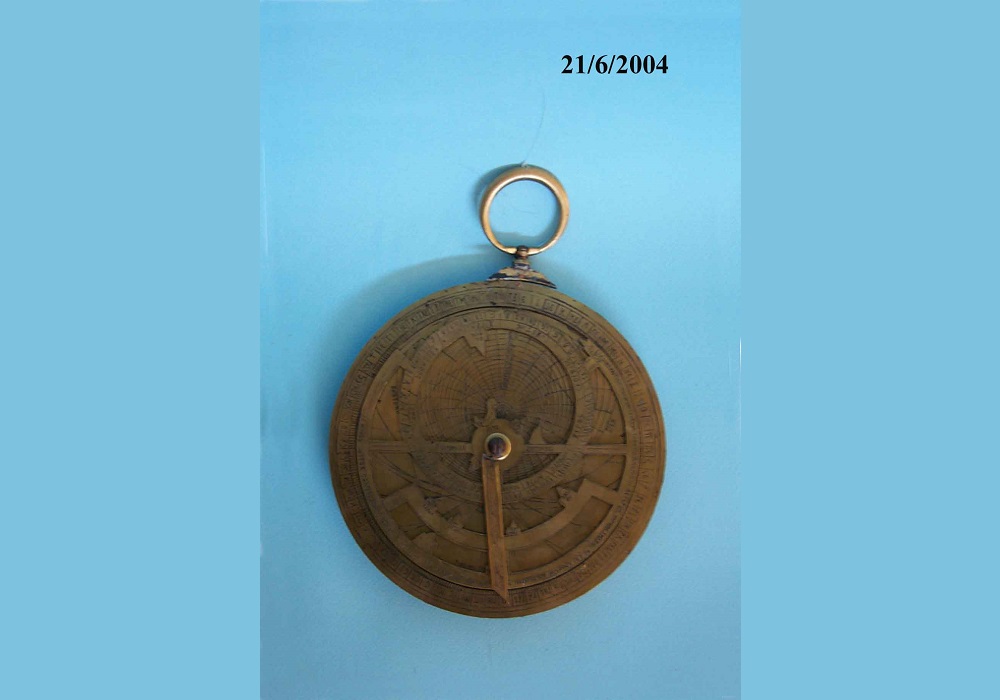The Byzantine astrolabe of Brescia is an extremely rare example of an astronomical instrument, not only due to its Byzantine origin and precise dating but also because of the two inscriptions it bears. One is a metrical inscription that describes the general uses of the instrument and provides the name and nationality of its maker—Sergios Protospatharios from Persia. The other inscription states that the instrument was made in 1062.
On the rete, the names of the twelve constellations are engraved in a circular arrangement. Fourteen predetermined stars are indicated by the pointers of the rete—nine in the northern hemisphere and five in the southern. All of them are the brightest stars of the clusters in which they are found, and they correspond, under the same names, to those recorded by Ptolemy.
The mater is engraved with a stereographic projection of the celestial sphere, designed for using the instrument in specific locations. Each of the three plates is inscribed with a place name (Rhodes, Byzantium, Hellespont), the climate, the number of daylight hours on the longest day, and its geographical latitude.
According to John Philoponus, Greek astrolabes are classified based on the number of parallel lines they feature. They are thus called monomoiriaioi, dimoiriaioi, and trimoiriaioi, corresponding to the Arabic terms Tamm, Nisfi, and Thalthi. The Brescia astrolabe is unique in this regard: one of its plates fits into the Greek trimoiriaioi classification, while the other two align with the Arabic Sudsi category, meaning they have a line engraved for every six degrees, displaying a total of fifteen parallels.
The Greek script used for the names of cities and numbers, along with the fact that the city names, climates, hours, and elevations match those recorded by Ptolemy and his successors, supports the conclusion that the Brescia astrolabe is of Byzantine origin. Furthermore, stylistically, it differs greatly from the highly elaborate Eastern astrolabes. The rete, which according to Arab and Persian traditions is typically the most decorated part of the instrument, is simple and undecorated in this case.
The existence of the Byzantine astrolabe of Brescia proves that Byzantine astronomical traditions did not disappear during the Macedonian and Komnenian dynasties and that the Arabs did not hold a monopoly on astronomical knowledge in the early Middle Ages.
NOESIS is a cultural, non-profit organization that provides the general public with a pleasant environment to learn about developments in science and technology. Its facilities include a Planetarium, a Large-Screen Cinema, a Simulator, and a Technology Museum. Additionally, it organizes numerous educational programs, temporary exhibitions, lectures, and public events aimed at fostering an understanding of science and promoting a spirit of innovation and creativity.


